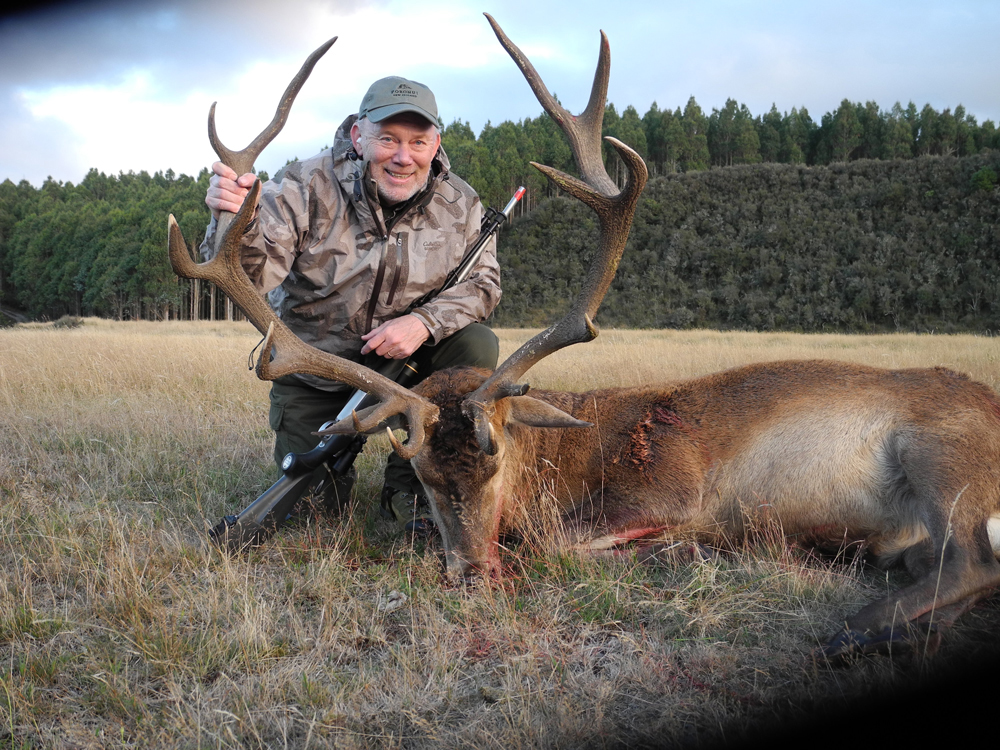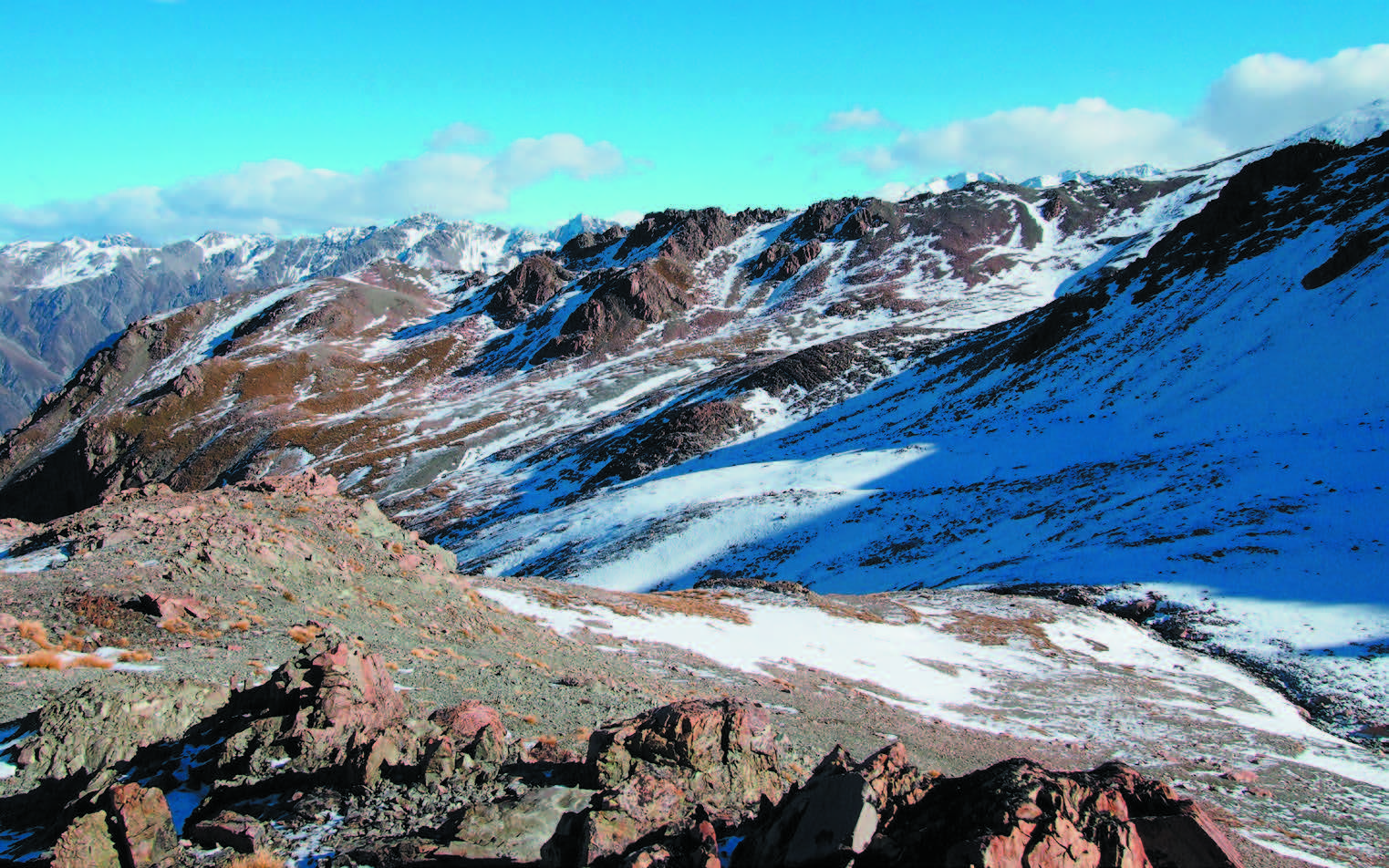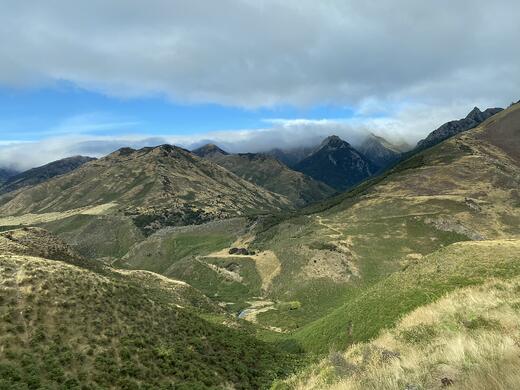In the late summer of 1769, HMS Endeavour, commanded by the famed English navigator Captain James Cook, left Tahiti and, on orders from the British Admiralty, set forth on a southwesterly course in search of what many at the time believed was a great continent that existed in the southernmost reaches of the world. After some two months at sea, it was Nicolas Young, a plucky 12-year old cabin boy on the Endeavour, who, on October 7 of that year, made out a distant promontory off the ship’s bow.
For being the first of the crew to spot land, Captain Cook rewarded young Nicolas with five gallons of rum and the name of the headland he first spotted. It was not, however, the coast of the mythical southern continent. Instead, what Nicolas had glimpsed was a high bluff jutting out from a bay on the east coast of New Zealand’s North Island. Nick’s Head, as it is still known today, can be seen from the town of Gisborne, which, incidentally, is the first city in the world to see the sun each day.
It is easy to believe that the Sporting Gods chose to bring dawn’s first light to this faraway locale for a good reason: to call attention to the fact that these distant islands are home to some of the best hunting and fishing on earth, bar none.
Oddly enough, that wasn’t always the case. Even though it is blessed with a variety of great habitats, New Zealand was, with the exception of several species of bats, historically devoid of any land mammals. No indigenous critters of any kind, at all.
From the sportsman’s perspective, this created a true tabula rasa, the perfect blank sheet on which to introduce the best of the best for the hunter and angler. For example: red deer from Scotland in the 1850s and ’60s, the Turkish fallow deer in the late 1800s, and the wily and elusive sika deer from eastern Asia in the early 1900s. Brown trout, from English stock in Tasmania, were released in New Zealand in the 1860s, with rainbow trout from the USA coming over in the late 1880s. And that’s just a sampling.
The first four-legged animals on the islands were, however, a small flock of sheep dropped off by Captain Cook on the North Island when he made a return voyage in 1773. Almost 250 years later, I shot what might have been a descendant of this original band, a nice wild ram. It was just one slice of a great hunting and fishing adventure at one of the world’s great wilderness retreats—Poronui Ranch, nestled in the secluded Taharua Valley of New Zealand’s North Island.
Once a rustic fishing camp, Poronui has transformed itself into a world-class lodge without resorting to pomp or exaggerated décor. It retains its sporting ambience and a down-home, cozy feel, providing guests with a truly upscale experience in an atmosphere of understated elegance. With only seven free-standing guest cabins surrounding the main lodge, there is an intimate atmosphere to Poronui that simply can’t be matched by larger lodges.
When I arrived at the lodge—it was about 10 in the morning—I noted the open kitchen and communal dining table. Almost without asking, the chef began whipping up a full English breakfast that I ate in the company of several of Porunui’s guides and staff. By my second cup of coffee, I was seated among friends.
Speaking of friends, the head hunting guide, Mark, and I hit it off within the first five minutes as we left the lodge well before daylight the next morning on our way to the property’s hill country in search of a suitable red stag. Dawn found us glassing a valley below, mostly high grass but interspersed with small groves of trees and brushy plants in the steeper cuts.
It was from one of these thickets that I saw my first New Zealand red deer, an utterly amazing stag that Mark whispered would easily score well over 400 SCI. The profusion of points on his massive, backswept rack was mind blowing, a vision that struck me more like something out of Jurassic Park-like past than anything you might see today. Of course, as a writer and guest of the lodge, this world-class stag was well beyond my pay grade. Nonetheless, he was a great sight to see in the wild.
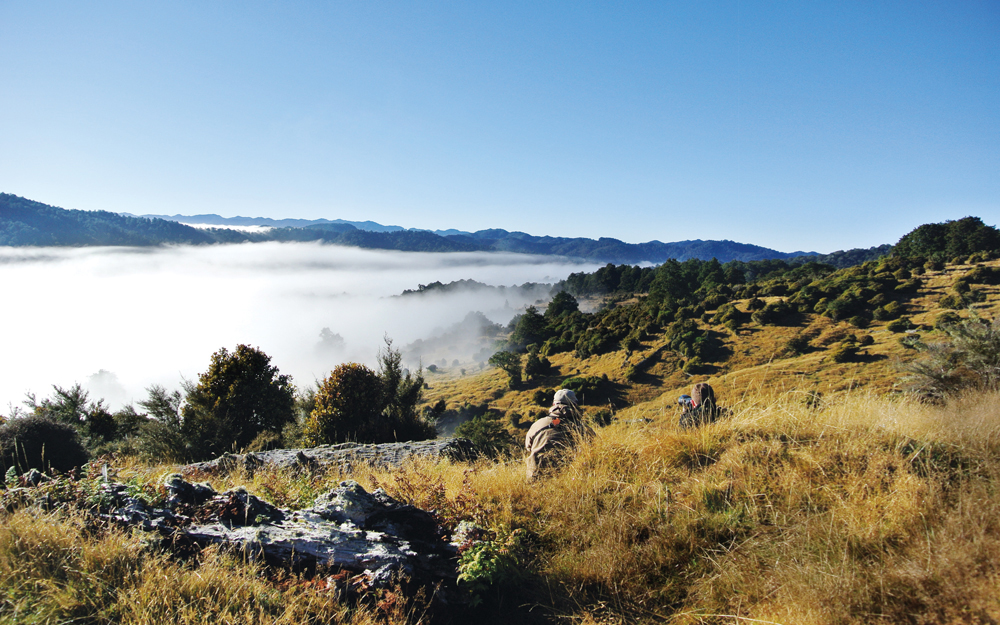
Scanning the edge of a fog-choked canyon for stags.
Through the day we moved to different vantage points to glass new hillsides, not always seeing red deer but often both sika and fallow bucks and hinds either grazing or on the move. Without question, the 16,000 acres of Poronui are among the most game-rich areas I’ve seen anywhere in the world.
We saw at least four more high-count stags during the afternoon, each, in the reverse of the usual dilemma, too big to shoot. Late in the day we made our way to a high bluff overlooking an expansive meadow below, a prime spot that Mark hoped would hold at least one good stag or two.
Mark’s hunch was on the money. In the anxious minutes that passed before the sun began to set, two stags moved away from beneath the bluff and out onto the meadow where we could see them. Unfortunately, both were very high 300-count bulls. But then the third sauntered into view.
I muttered to myself, “Well, this guy is still too big,” but Mark turned to me and said, “Shoot him if you like. He’s out at 290 yards,” which, using a Sako 85 chambered in .300 Win. Mag., I was thrilled to do.
Among the largest species in the deer family, a good stag weighs in somewhere between 350 to 500 pounds. Mark was able to get his truck close to where the stag lay, but we had a bit of a tussle getting him into the bed. If someone was making a YouTube video of this event, it might well be titled, “Watch Two Old Guys Try to Push/Pull a Stag into the Bed of a Pickup!” Such are the memories that make the hunt.
After shooting a fine red stag, I was ready to put my feet up until it was time to go fishing. Mark would have none of that. Poronui, it turns out, is ground zero in New Zealand for sika deer, the first herd in the country having been released on the ranch’s property in the early 1900s. The ranch lands continue to provide superb habitat for this elusive Asian species, and Poronui is, arguably, still regarded as the number-one locale for trophy sika in all of New Zealand.
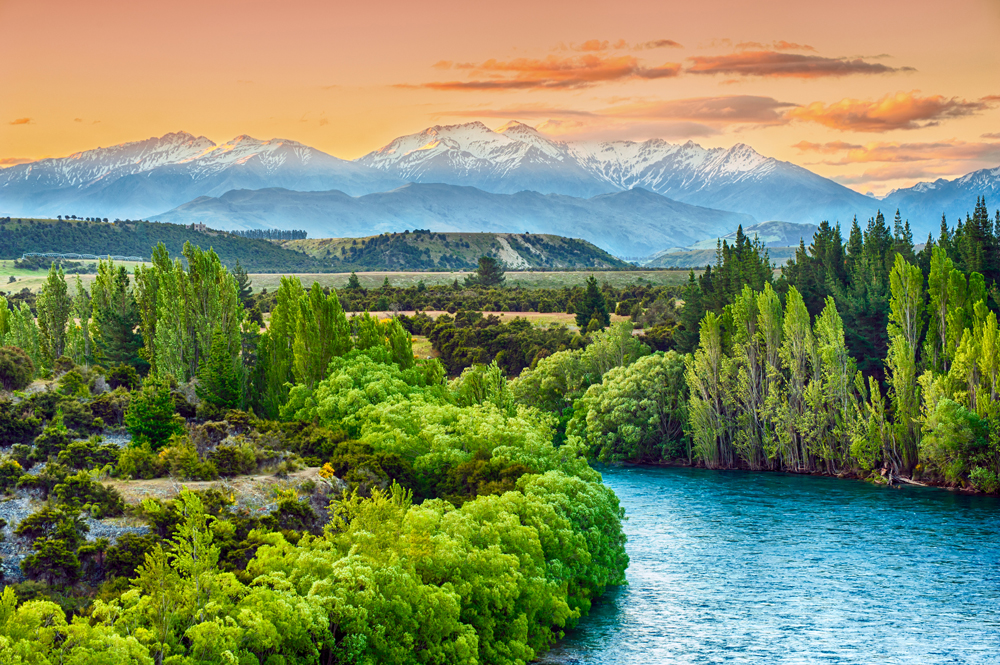
A pristine river glides through Hawke’s Bay on New Zealand’s North Island.
The second morning at Poronui started much like the first. Up before dawn, and then up to the high country to start glassing when the light became good enough. The first movement we saw on the hillside below turned out to be a band of fallow deer, not sika. Several nice fallow bucks, with their uniquely palmated antlers, came into view, but we decided to stick with our plan of finding a nice sika buck.
We switched to another peak and soon spotted a nice sika buck about halfway down the valley below. Unfortunately, he was bedded down underneath a large bush and looked to be perfectly content to stay just as he was, basking in the early morning sunshine.
The good news: I had plenty of time to set up in a prone position with a bipod up front and my daypack under my right elbow. This is about as close to benchrest solid that you can achieve in the field. Mark ranged the deer at 301 yards, but there wasn’t even a whisper of wind with which to contend. The only question was, would he stand up before our patience wore out?
It seemed like an hour, but it was less than 15 minutes later when a sika doe walked past our buck. He stood and turned, giving me a perfect broadside shot. We got him loaded in the back of the truck a lot easier than the red stag!
We startled a band of wild sheep as we descended from the top of a hill on our way back to the lodge. Mark saw that an older ram in this group had a broken leg, though he still pretty much managed to keep up with the rest of his gang. With winter on the way, however, Mark felt it best to shoot this particular sheep.
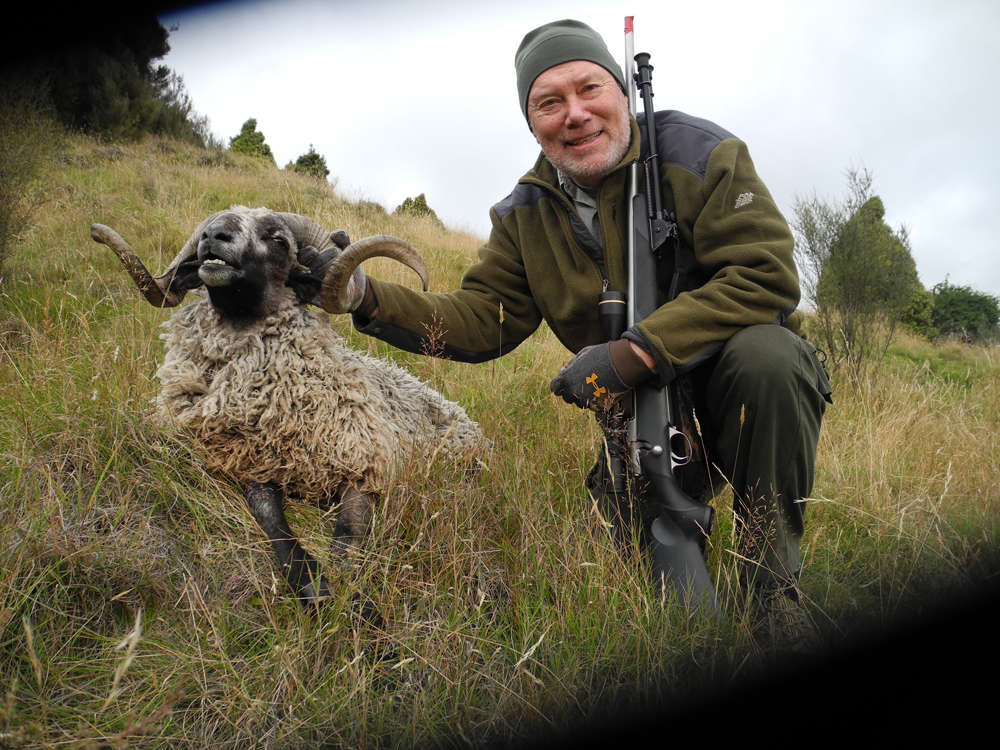
The author dropped this wild sheep from 354 yards away.
Oddly enough, the ram seemed to sense our intention and broke off from the other sheep, heading uphill for heavy cover. If he had stayed put he would have been safe, but he chose to leave the thicket and make a break for the top of the ridge, exposing himself on the grassy slope.
Mark ranged the ram at 354 yards, certainly the outer range of my comfort zone. I missed low with my first shot but anchored the ram with my second—a very nice sheep and a totally unexpected bonus on this hunt. I was learning quickly that getting more than you expected is par for the course at this extraordinary lodge.
After lunch at the lodge, Mark and I headed back out, not to hunt, but to simply sit up high on one ridge and glass for monster red stags during the beautifully crisp and sunny afternoon. I saw four that made my jaw drop.
In addition to red stag and sika deer, you can also hunt for fallow, rusa deer, and sambar deer on the property, as well as wild sheep and feral goat. Great hunting, however, is only part of the Poronui experience.
Part Two of Doug Painter’s unforgettable New Zealand adventure.

